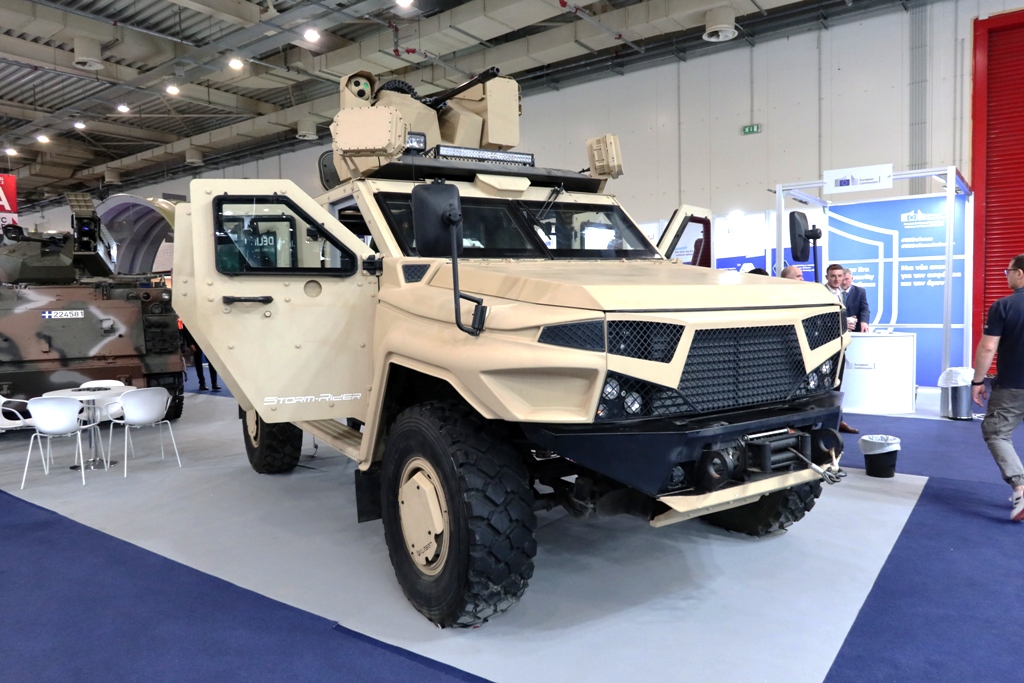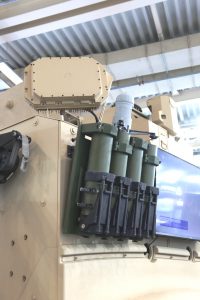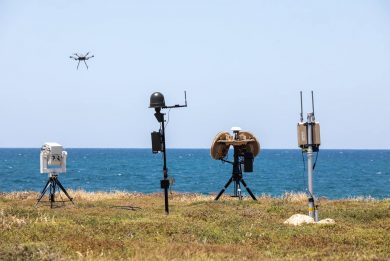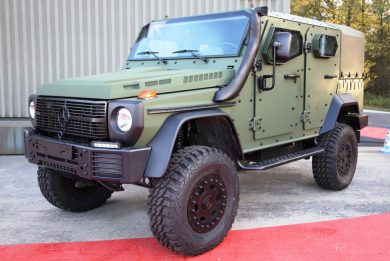
DEFEA 2025 – Rafael unveils its latest C-UAS proposal
Protecting mobile formations against unmanned air systems (UAS) has become a must in modern warfare, following recent conflicts that highlighted the increasing threat coming from the skies. Rafael of Israel unveiled at the Athens exhibition its latest proposal in the C-UAS domain
Among the two armoured vehicles shown by Rafael at DEFEA 2025, the wheeled one was dedicated to countering the threat posed by drones to any mobile tactical formation. The aim of Rafael is to create a 5 km radius dome capable to neutralise incoming UAS, allowing a battalion-size tactical unit to operate in the safest possible manner.

Discussions are ongoing among land forces on fitting integral C-UAS capabilities on board each vehicle, or deploying specialised vehicles in charge of formation protection. As usual each solution has pros and cons, which it would be too long to discuss here. The Rafael proposal is to deploy a limited number of specialised C-UAS platforms to provide aerial coverage to the formation, the combat elements being free to concentrate their efforts on the mission assigned.
The solution proposed at DEFEA was based on a light armoured vehicle provided by Plasan, the Israeli armour specialist. The StormRider is a 4×4 that was derived from the SandCat; a full structural monocoque fitted with independent suspensions, it has a good mobility on and off road, and has a gross vehicle mass of 11,500 kg. Such platform can easily be deployed to protect heavy armour as well as infantry formations, its protection against RPGs and missiles being provided by Rafael’s Trophy active protection system in its lightest iteration.

Coming to the C-UAS suite, this comes in a layered configuration, with the first layer being soft-kill. This is provided by an electronic warfare suite of the SIGINT (Signal Intelligence) type, this sensor allowing detecting the link between the incoming drone and its operator. While of course providing data about the air threat, it also allows to trace back the drone origin, hence the location where the enemy operator is deployed. At this point one of the hard-kill effectors available, a Spike missile, can be launched against the operator, not only neutralising the current single threat but also avoiding him to reiterate the action with other UAS, eventually operating in swarms. As for the incoming flight object, soft-kill action comes in the way of spoofing, such system being installed on board the StormRider.

Should soft-kill not be sufficient, the next step comes in the form of a hard-kill effector, namely the M230 Bushmaster Chain Gun low recoil cannon capable to shoot 30×113 airburst munitions, which pellets would destroy the UAS. Four radar sensors, one at each corner of the vehicle roof, were visible, providing target data to the vehicle computer that would then exploit the optronic sensor installed in the turret to carry out tracking and aiming.

A further defensive layer is available, should the attacking drone be able to survive 30 mm rounds; in that case the gunner would launch one of SpearUAV Viper Interceptor killer drones that would neutralise the threat thanks to its lethal package. A quadcopter UAS, the Viper I deploys after being launched from the tube, Spear UAV having developed a multiple launcher solution that could be seen at DEFEA installed at the rear of the Plasan StormRider used to demonstrate Rafael’s new C-UAS concept.

The vehicle hosts a team of four military. At the front we find the driver on the left, with the commander on the right. The latter task is to monitor the overall situation on his screen and prioritise targets. Behind the commander we find the operator responsible for command and control, who concentrates on the current defensive operation, observing all available data about the incoming threat on his display and passing them to the gunner, who is seated at his left.
The latter is the one who conducts the engagement; he monitors the situation on his screen, under which a panel with electronic warfare switches allow him to activate soft-kill procedures. His seat is fitted with two reclining armrests; the one on the right side is fitted with the cannon commands, while that on the left hosts Spike and Viper I commands.

Rafael also proposes a solution in which the cannon is replaced by its Lite Beam 10 kW class laser effector, capable to defeat Class 1 and Class 2 UAVs, which was recently seen in model installed on a light 4×4 vehicle.
Photos by P. Valpolini


